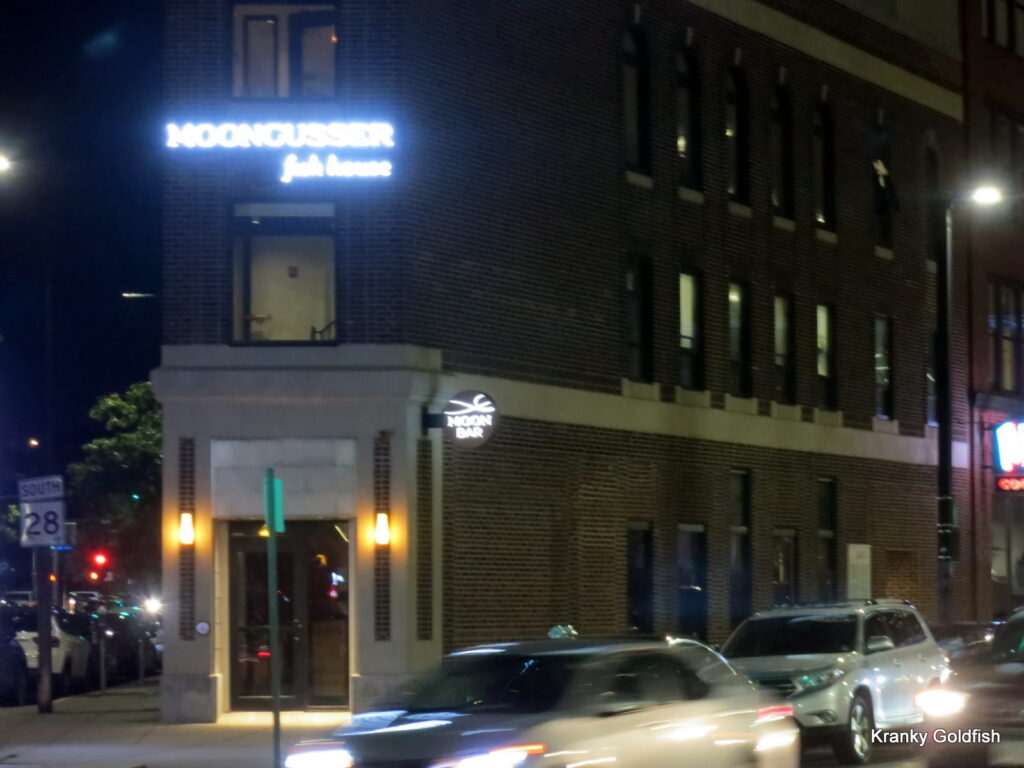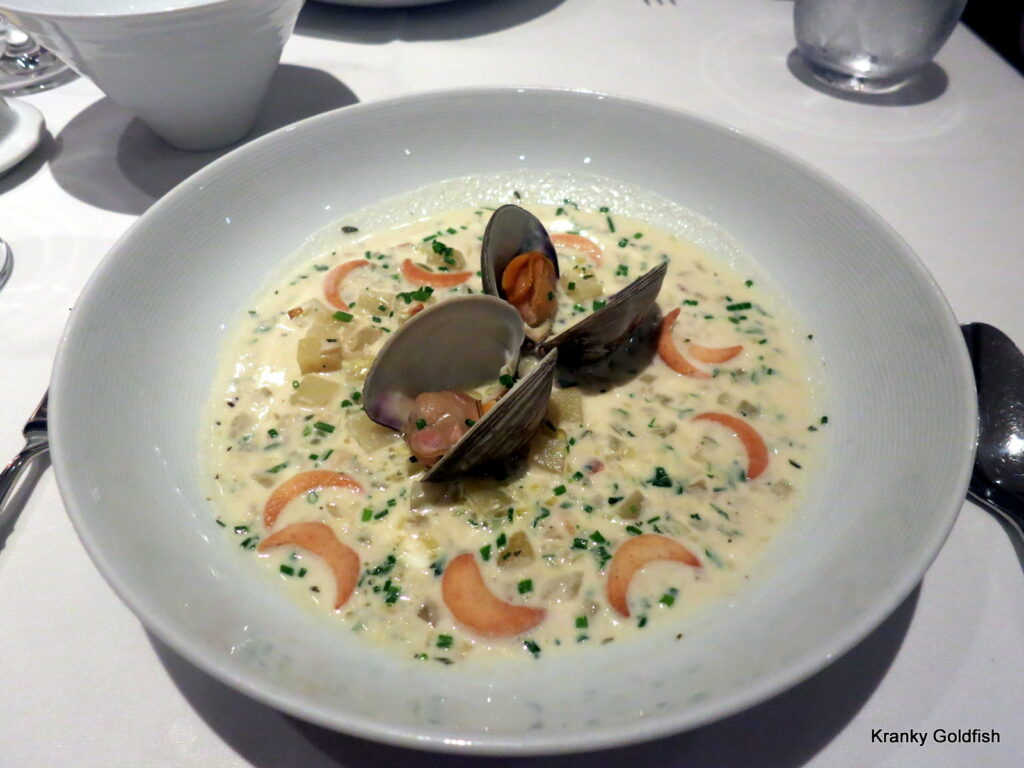-
Day 9. Boston. Music, Mafia, Mooncusser
In which we imbibe some culture, walk some more, and eat some delicious seafood.
The Yarts
Our last full day in Boston! All those days and we haven’t even been to a museum yet. Well, the Tea Party visit was technically a museum. And so was the central building at the Navy Yard. But they were history museums, not the type with paintings, and sculptures, and other forms of art. So we jumped on the T and public transported ourselves off to the Boston Museum of Fine Arts. Conveniently located right by Museum of Fine Arts station, although to be honest it’s more like a slightly enlarged tram stop.

A proper T station If you look up the population of Boston, you will see it is about 700,000. Why does a city that size have an elaborate underground railway system and so many skyscrapers? Of course, Boston proper is just the old city. The peninsula and a couple of inner suburbs are Boston – anything north of the Charles river doesn’t count, nor anything west of Brookline or south of the Neponset river. Even Cambridge (you know, where Harvard is) isn’t part of Boston for this purpose. The greater Boston area, however, covers almost a third of the state and has a population of about 5 million. So there you go.

Doreen : MFA has many fine collections but I really only wanted to see one, the Musical Instrument collection and I was not dissappointed. A headset is a must on arrival, for a few dollars extra it transformed the experience. I was no longer glancing at sterile containers but feeling the emotions of the composers and listening to the stories of these instruments.

As a flutist or more accurately an owner of a flute, I found it fascinating to see the variety of models and materials and the impact on the sound. I have never seen a glass flute before and I was delighted by it’s lovely timbre. Part of the experience is that there are recordings, available through the tour headsets, of short pieces played on the actual instruments being exhibited. It is also wonderful that I can revisit the memory by listening to it again on YouTube.

This wooden flute is a very pretty instrument and had a lovely warm tone. I can’t find a recording of this particular instrument but if you are interested in hearing what one sounds like here is Emi Ferguson playing J.S Bach.

There have been some truly wacky instruments developed though the ages. If you look closely you will see the tenor trombone has a tongue. Guess what – it moves when it is played! Take a look and hear it played.

I eventually managed to tear myself away from the instruments, and just as well as there is so much to see. We realised the couple of hours we allotted to the museum, was not nearly enough. The two portraits, above and below, are by Gilbert Stuart and are of George Washington. Does the top one look familiar? It is the original work that ultimately became the portrait on the one dollar bill.

George Washington at Dorchester Heights, full-length in uniform, standing by a white horse, holding his bridle in his left hand and his chapeau in his right. Commissioned by Samuel Parkman in 1806.
David : In the late afternoon we did a Boston by Foot tour, The Dark Side of Boston. Was an enjoyable tour, nice small group with lots of historical information.
Topics include the Boston Irish mob, the Boston Mafia, the famous Brink’s payroll robbery, Prohibition and the seedy side of life in the North Side. But those aren’t terribly photogenic, are they?

This lovely scenic spot in the distance is the Bunker Hill monument on the left and the USS Constitution Museum, with the Constitution herself visible towards the right. Where we were standing was the site of the Great Molasses Flood of January 15, 1919. Which sounds kind of funny, but a twelve-thousand ton tank of hot molasses burst, killing 21 and injuring 150 people. The tragedy was the cause of a number of revisions to construction and industrial safety regulations.

Dinner that night was at the Mooncusser Fish house. What on earth is a mooncusser? Well, back in the olden days there were people known as land pirates. They would place lights along the shore at night to mimic beacons and lighthouses, but in places so as to lure ships to crash on rocky shores, where the land pirates would loot them. This trick would only work when there was no moon for the ships to see the coast, so the land pirates would curse the presence of a good moon, hence moon-cussers. If you are of a certain age you may remember a children’s novel titled Moonfleet*, in which this trick was a plot point. It seems like a very roundabout way to derive a name, but if 19th-century police were known as “mutton-shunters“, I guess this isn’t too bad.
Anyway, Mooncusser is a rather upmarket seafood restaurant in the Bay Village area, just a couple of blocks south of the south-west corner of the Boston Public Garden and a pleasant twenty minute or so walk from our apartment. Inside, the decor is sleek and minimalist, white tablecloths, occasional dark panelling to define a row of booths down the middle, and polished professional service from the well-dressed servers.
* So reading the Wikipedia entry, Moonfleet is not just an obscure 19th-century novel I read in my primary school library forty-some years ago. It was made into a film, several stage plays and no fewer than three TV adaptations. In my defence, I had no idea.

We wanted to try as much of the menu as we could, so ordered four appetisers and a dessert instead of going the main course route. Variety is the spice etc etc.
Our first course was a squid salad in an East Asian style. Tender squid, Napa cabbage, bean shoots, a fresh and tangy nuoc cham dressing and some coriander for extra pep. I should do this at home.

Next was smoked bluefish pate, good strong smoke and fish flavours and creamy texture on light, crisp crackers.

Scallop poke. Slices of big fresh scallop in a light ponzu-soy dressing with a sprinkle of schichimi togarashi, a Japanese spice mix of ground chili, seaweed and other spices to give it a kick. Very nice, and if I could get good scallops here I would make this in a flash.

Mooncusser’s chowder was a completely different creature to Union Oyster House’s. This was the fancy restaurant version – a light, delicate, smokey seafood broth with plenty of seafood (halibut, clams and probably more), finely diced potatoes and fresh herbs. And both styles are great in their own way.

Dessert was a bete noir, a flourless chocolate cake rich and dark with some lovely fresh fruit and meringues to provide variety on the plate.
And off home we went, our last day in Boston. There were so many more things we would have liked to see, but holidays are finite and we did a lot with the time we had here.
Tomorrow, we finally hit the road.